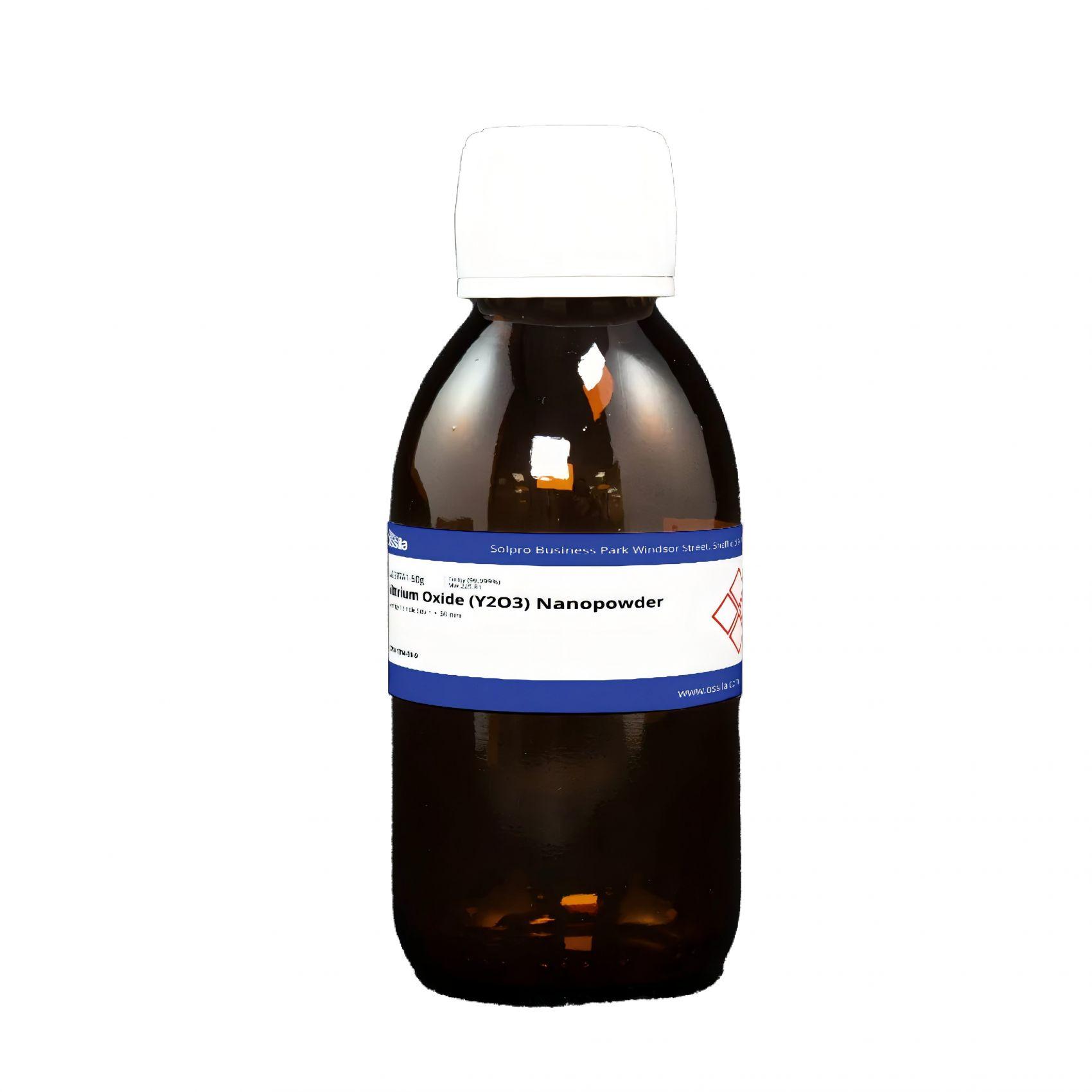
Yttrium oxide (Y2O3, CAS number 1314-36-9), known as yttria, a highly stable rare earth heavy metal oxide. It is widely used to make phosphors Eu:Y2O3 which exhibits sharp red emissions.
Y2O3 films exhibit excellent electronic properties such as optical transparency over a broad spectral range (0.2 – 8 μm), high dielectric constant (∼ 14 – 18), high refractive index (∼ 2), large band gap (∼ 5.8 eV), low absorption (from near-UV to IR), and superior electrical break-down strength (> 3 MV/cm).
Yttrium oxide, as an important phosphor material, has been widely applied in fields of white LED phosphors, solid lighting, and fluorescence sensors. Yttrium oxide nanostructures have been proven to be an excellent host matrix to rare earth ions such as Eu3+, Tb3+ and Yb3+. Yttrium oxide doped with europium (Y2O3:Eu) is a luminescent material with red-orange emission, excitation by electrons (cathodoluminescence). Y2O3:Er particles and the surface modification of these particles with double layers of PAAc (acrylic acid) as an interfacing agent and acetal-PEG-b-PAMA led to successful NIR imaging nanoparticles. With great thermal, chemical, and mechanical stabilities and its unique optoelectronic properties, yttrium oxide also finds applications in solar energy processes, lithium-ion batteries, and components for rare-earth-doped lasers.
CAS Number 1314-36-9
Chemical Formula Y2O3
Molecular Weight 225.81 g/mol
Chemical Name Yttrium oxide
Synonyms Yttria, Yttrium sesquioxide
Classification / Family 2D semiconducting materials, nanomaterials, Solid lighting, metal oxides
Colour White powder
Yttrium Oxide (Y2O3) Nanopowder
Product Code M2397A1
Average Particle Size (APS) < 50 nm
Specific Surface Area (SSA) 25 m2/g – 45 m2/g
True Density 5.01 g/cm3
Bulk Density 0.3 g/cm3
Melting Point 2450 °C (lit.)
Purity > 99.999%